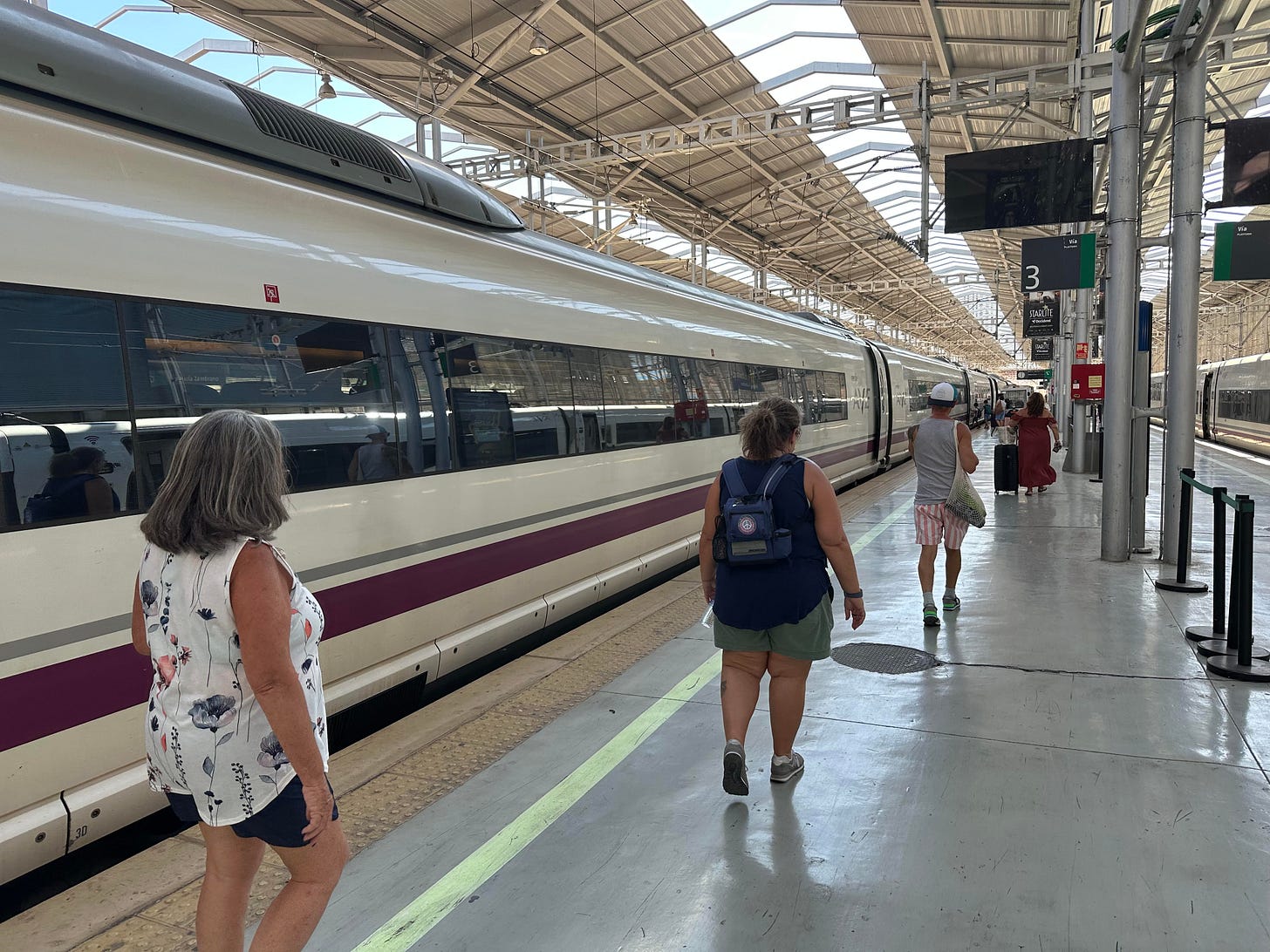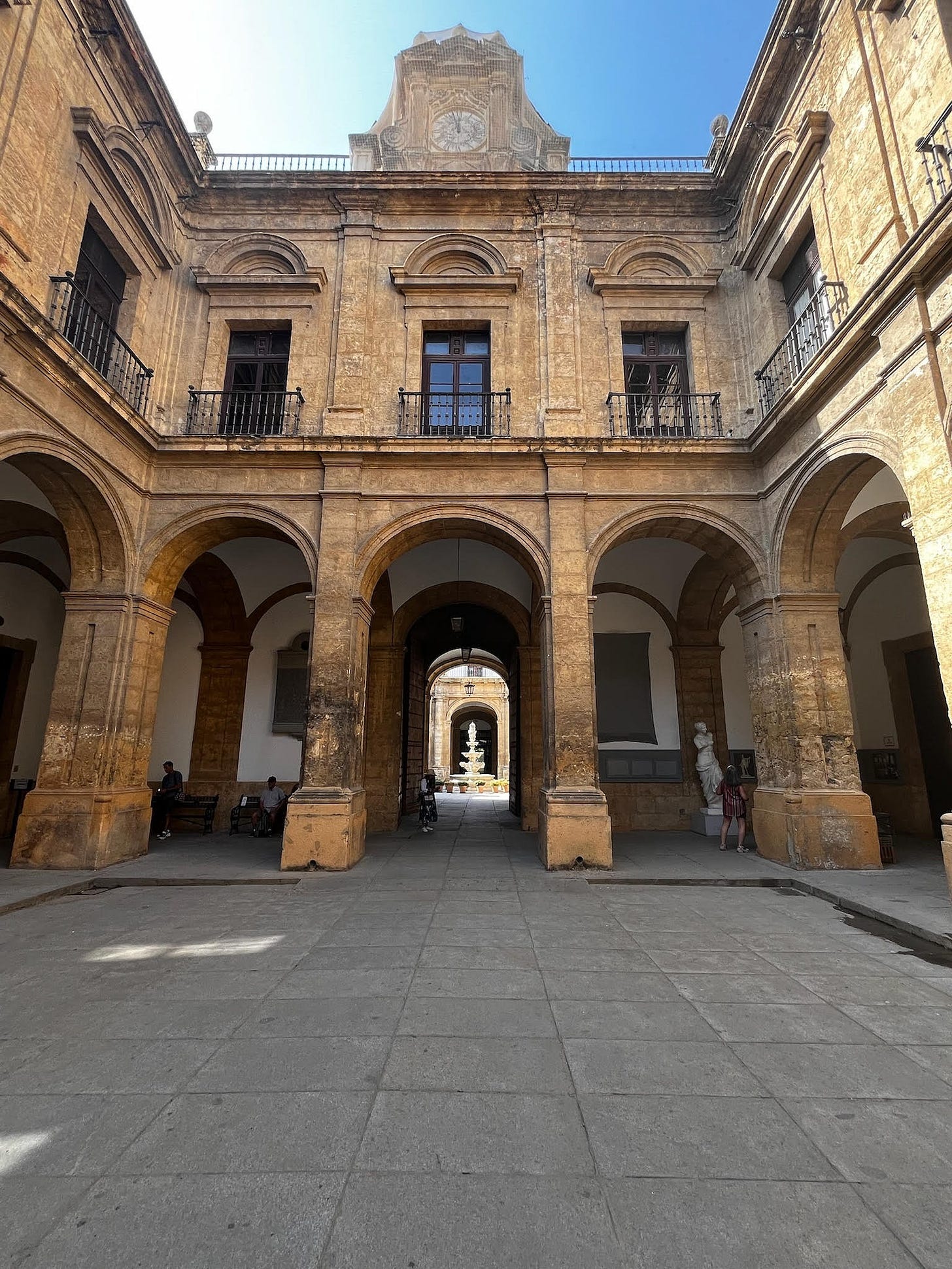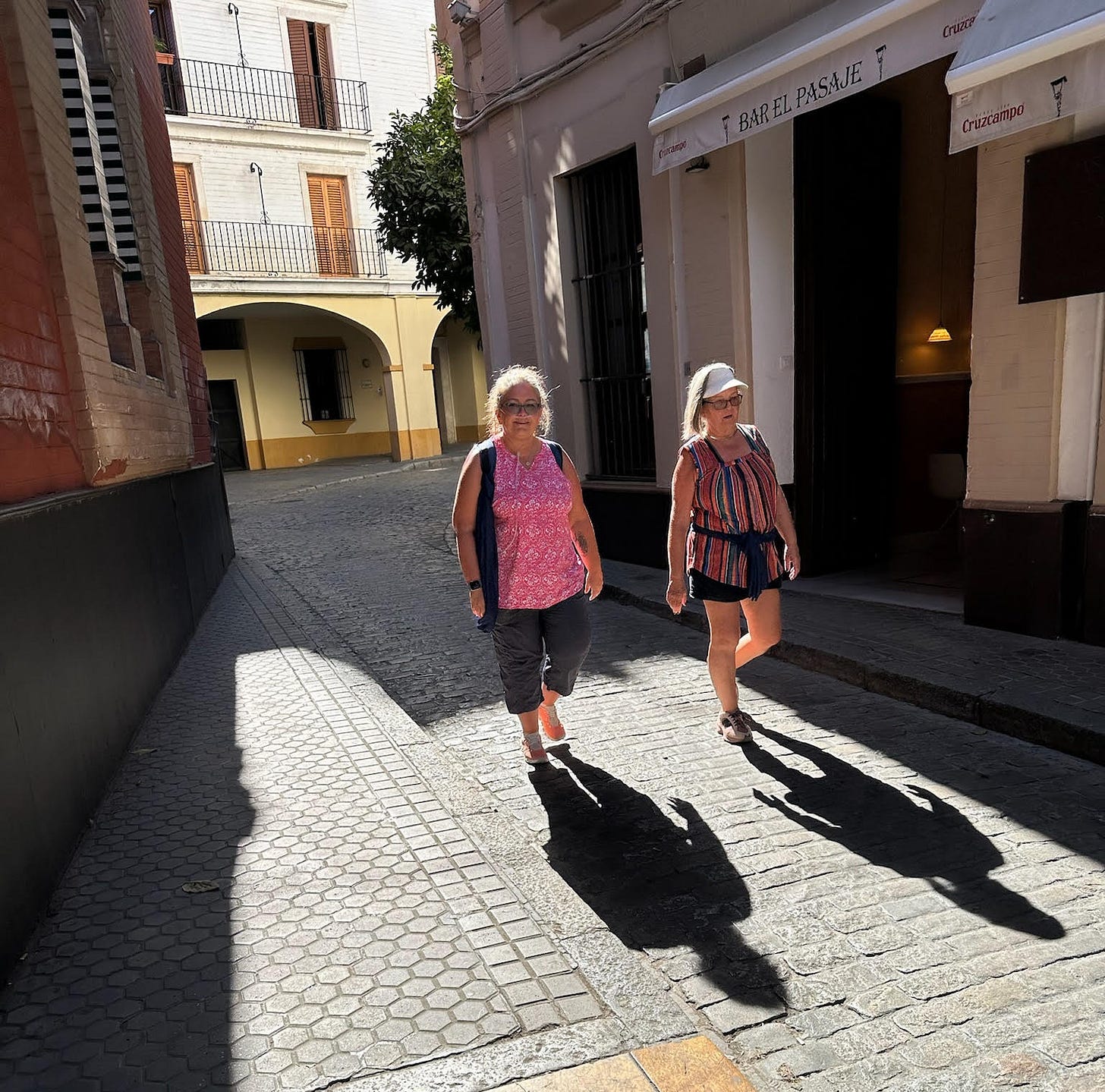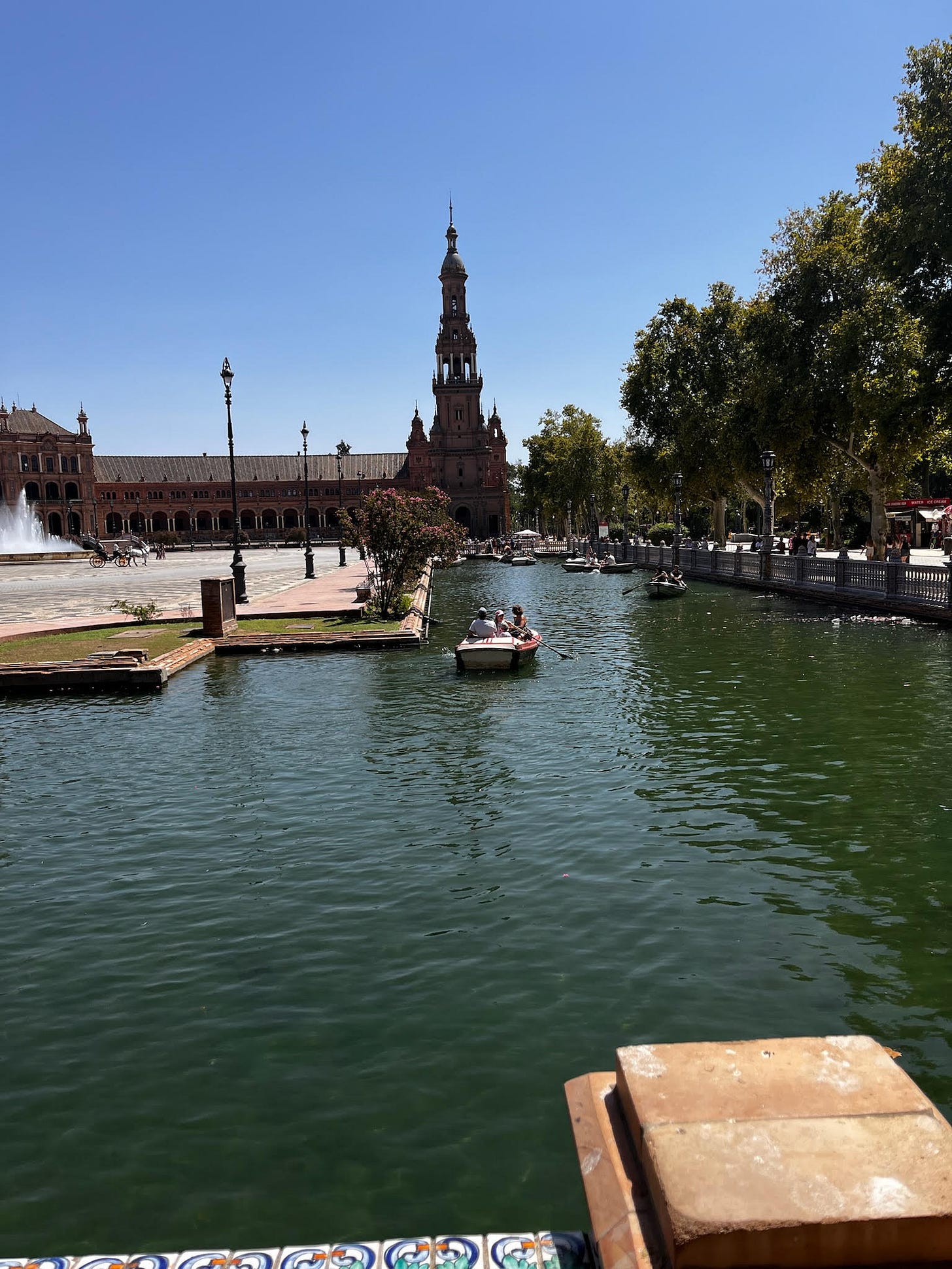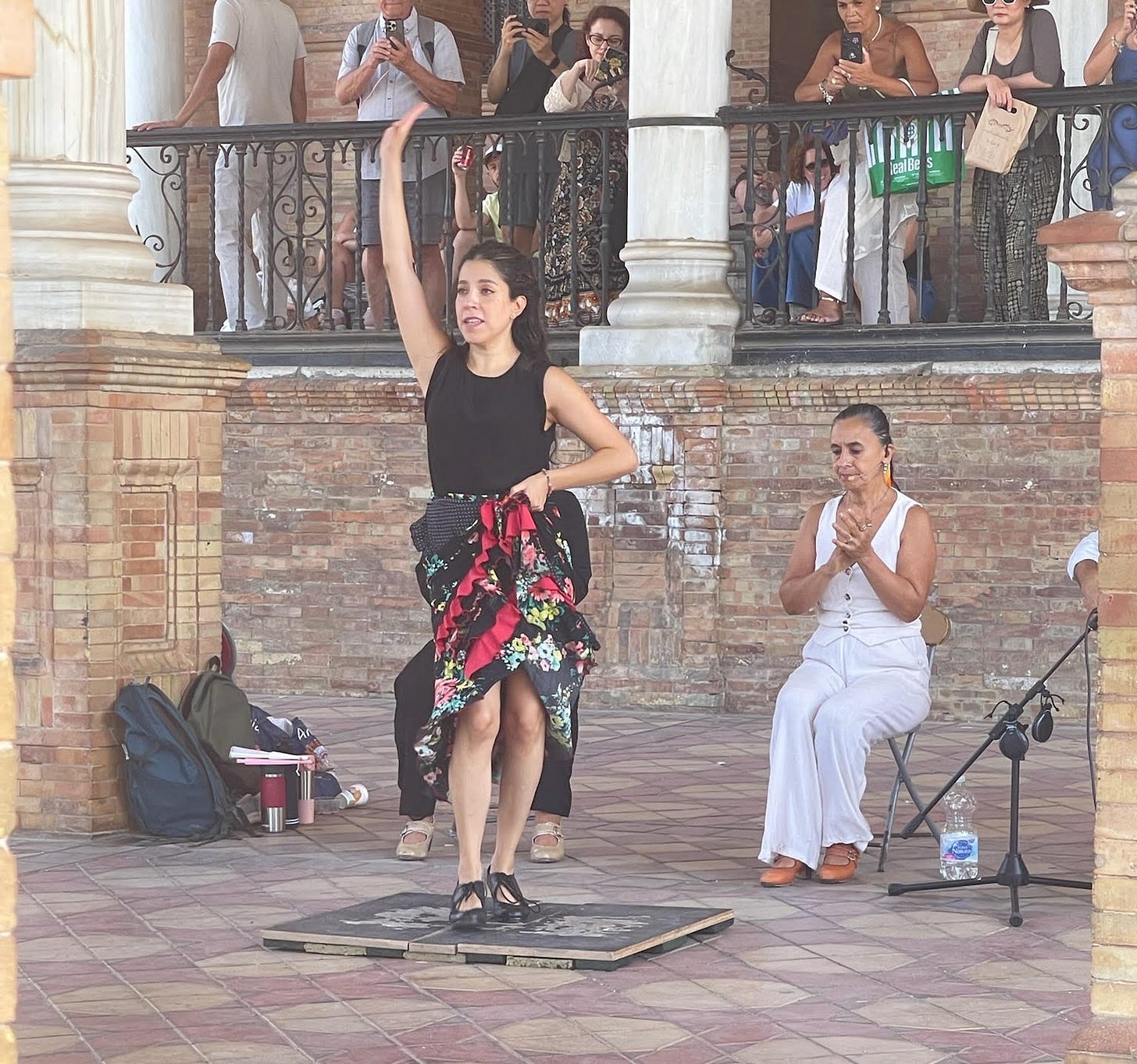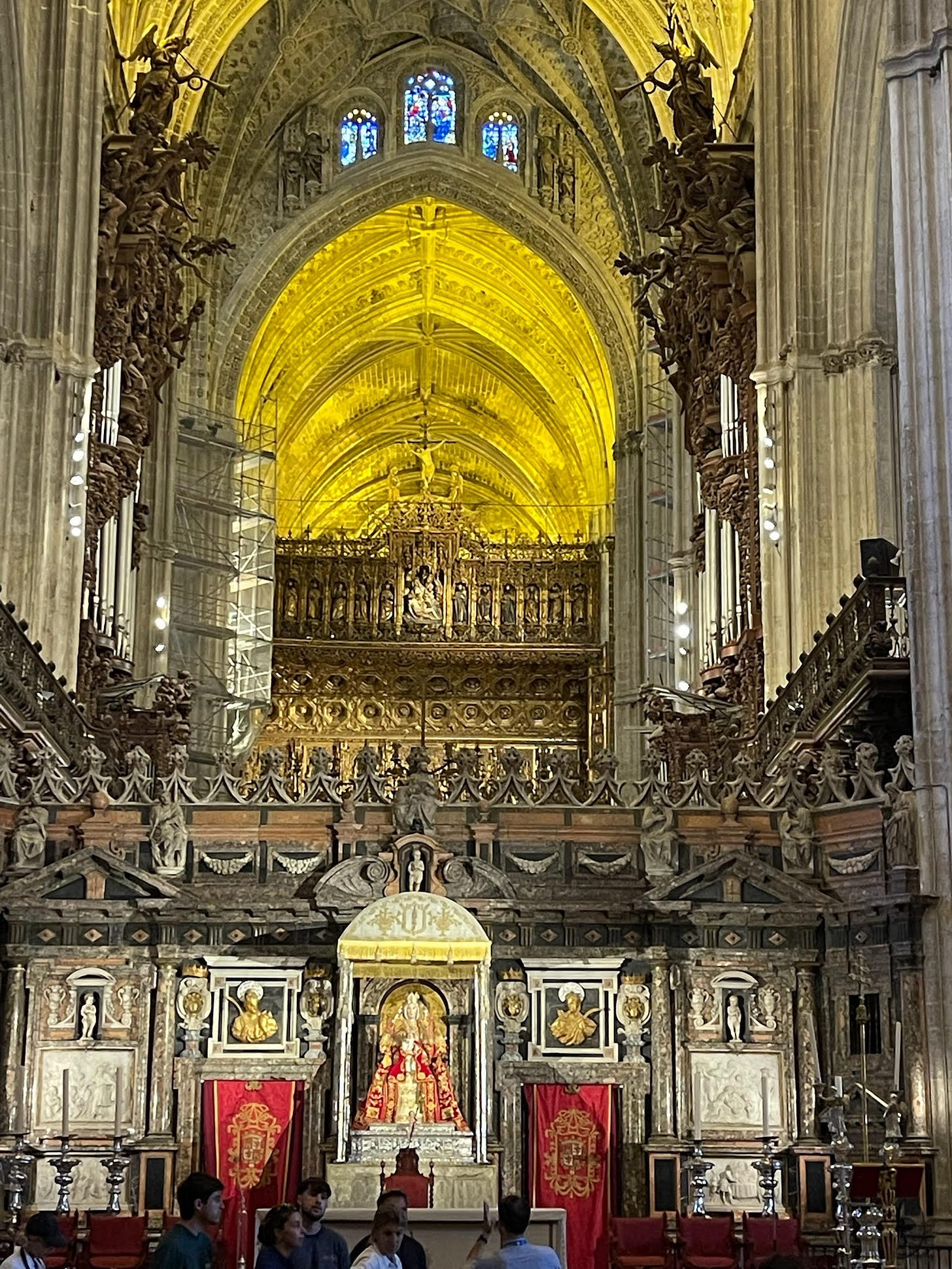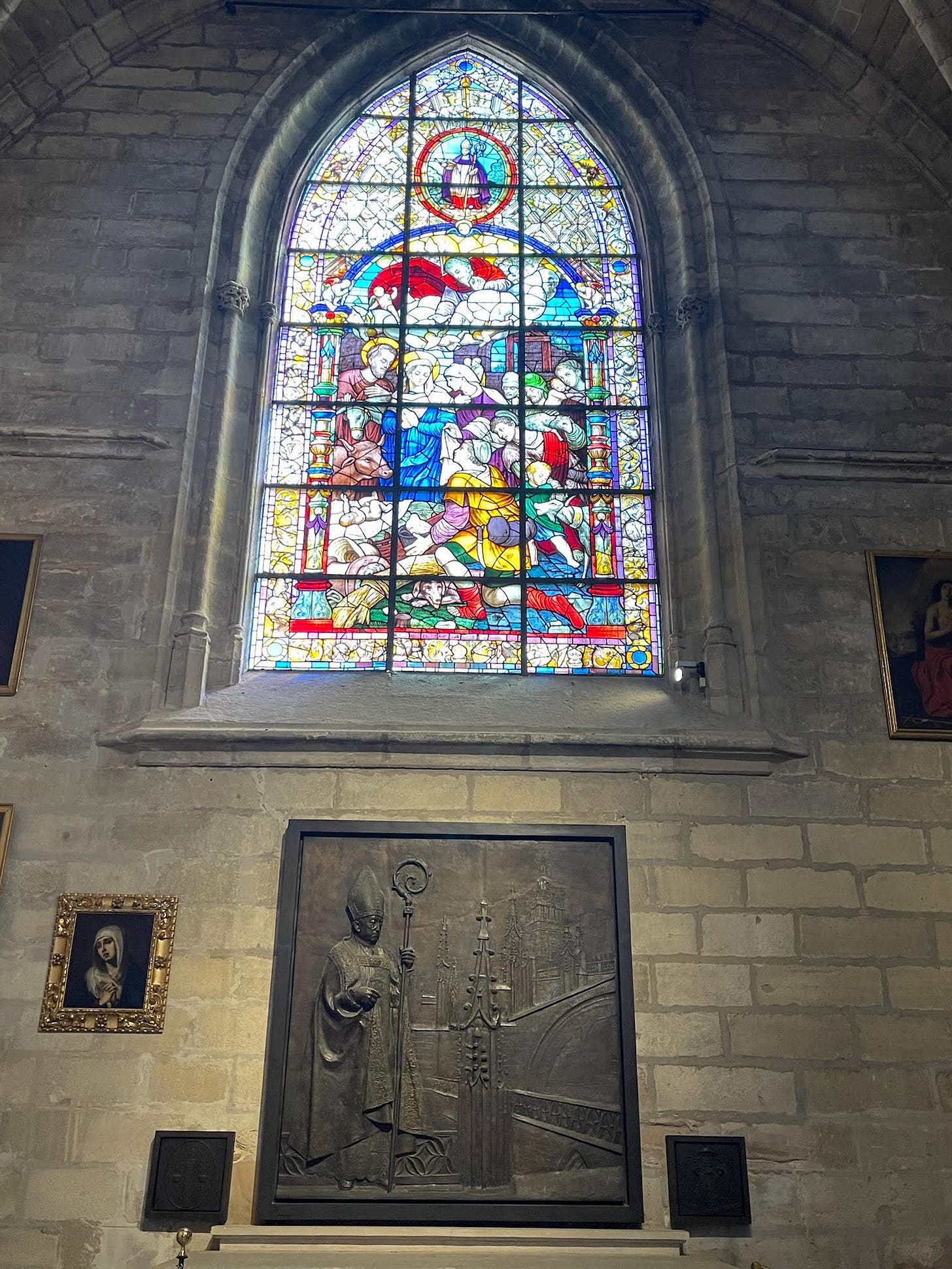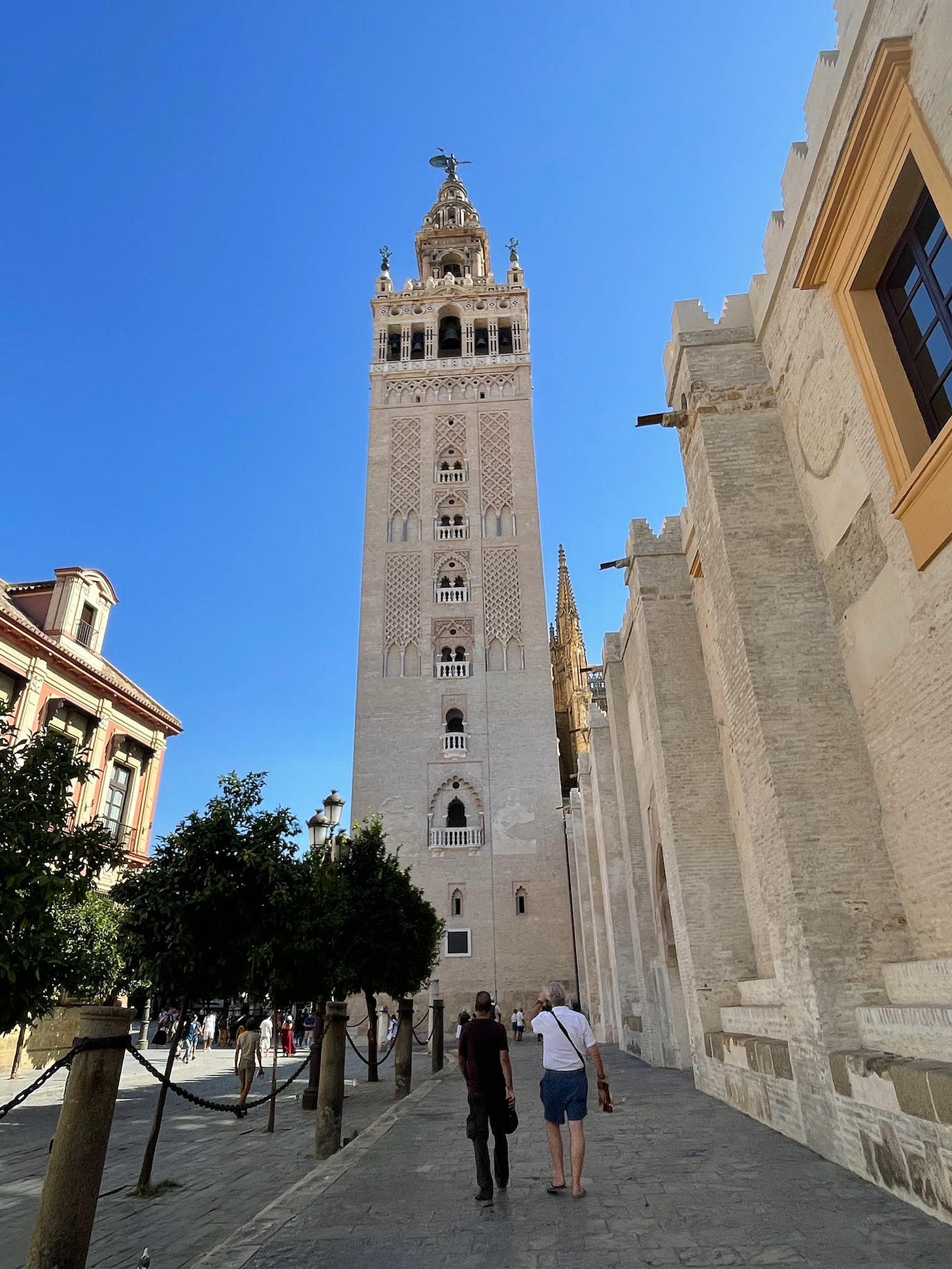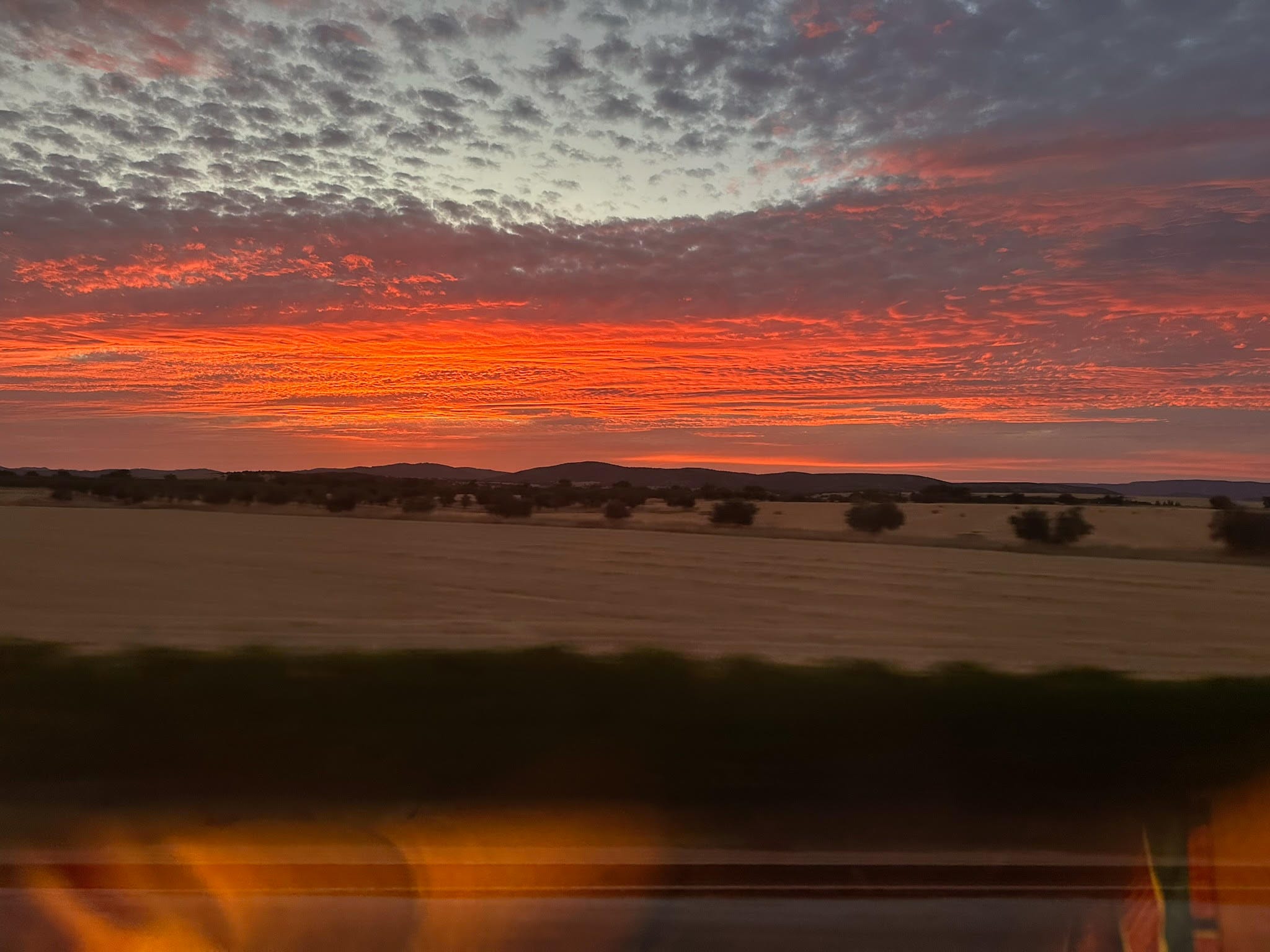We got an early start for our excursion to the city of Seville. It’s 390 kilometers (242 miles) from Madrid, which is about 2-1/2 hours by fast train. We needed plenty of time because there is so much to see and do in Seville.
Our first stop after arriving at Santa Justa Railway Station in Seville was to walk to the city center. We usually end up walking a lot, 5 to 10 miles on most excursion days, so it really helps to prepare physically before the trip.
After strolling through the Royal Gardens, we crossed a moat into what we thought was a castle near the garden. Instead, it was the main building of the University of Seville. We paused at the massive iron gates leading into the building, fully expecting to be stopped and searched by security personnel. But when Kathy asked someone in uniform if we could enter and look around, she said, “Sure. There are no students here now, so the place is empty.”
Next, we headed toward the Plaza de España, which sits within an enormous park. We found the plaza, but by that time, we were all starving for lunch. Now, meals in Spain are tricky. The Spanish people take their meals at odd hours, and when it isn’t meal time, the restaurants are just not open. Anywhere. We walked several miles, chasing ghosts on our map apps that appeared to serve tapas and sandwiches. They were all closed. But we did finally find one that had pretty good lunch food along with very cold cerveza.
The sun was so hot that day. We scooted from shade tree to shade tree, but never completely escaped its laser rays. Even in the back alleys of Seville, our shadows seemed to run ahead and try to pull us out of the light.
Back at the Plaza de España, colorful individual mosaics depict each of about two dozen Spanish cities. The place has so much history and art that we spent most of the day exploring the semi-circular building, wandering around and admiring things.
There was even another flamenco group performing for us in the center of the plaza.
By this time, we were all tired and sweaty and ready to sit down in the shade and relax until the return trip. But there was one more sight to see: Seville Cathedral.
I yawned. Yet another European church like the ones we’d already seen a dozen times in a dozen different European cities. Ho hum. There’s no way it could be larger or grander than the ones in Milan, or Paris, or even Istanbul.
Except… it is. Larger, grander, and at least as beautiful as any of those. It is one of the largest churches in the world, and the largest Gothic cathedral. It began as a mosque built in the 12th century and was “Christianized” in the 13th century. Its cavernous central nave is longer and higher than any I’ve ever seen. The towering balcony you see in the photograph below isn’t the nosebleed section for lowly parisioners; it’s the choir loft!
Bryan was especially fascinated by the vast wooden carving depicting hundreds of scenes from the story of Christ. “How many carvers worked on that?” he asked me. “And how long must it have taken them?”
One of Tracy’s favorite features was the stained glass window.
When the Christians converted the building, they preserved one of the original minarets from the old mosque and turned it into a clock tower, which now serves as probably the most distinctive and recognizable symbol of this great city.
By now, we were utterly exhausted. The laser sun had taken all our energy, and we were ready to find the train station and roll off into the sunset.



